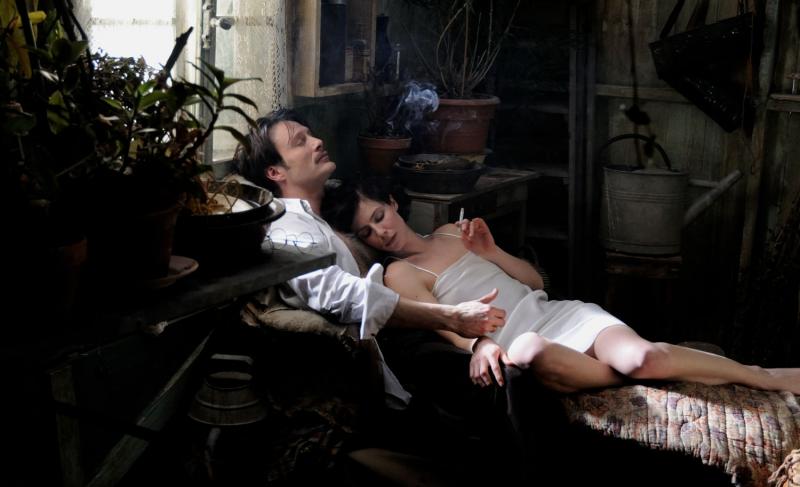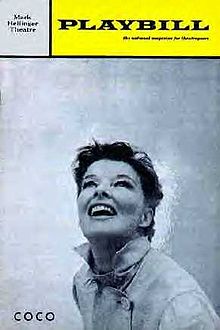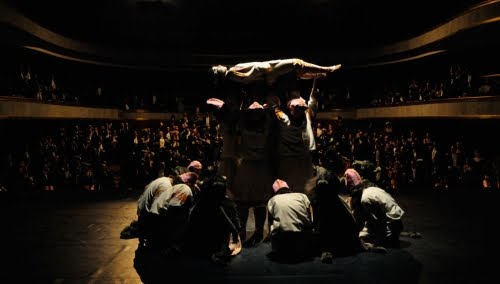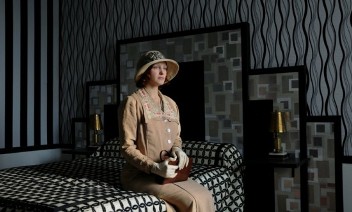Coco Chanel & Igor Stravinsky | reviews, news & interviews
Coco Chanel & Igor Stravinsky
Coco Chanel & Igor Stravinsky
Composer and couturier enjoy a tumultuous, possibly fictional liaison

She glides on the arm of a tail-coated swain into an elegant Belle Epoque drawing room. Music swirls, eyes swivel. And no wonder. Her thin black dress hugs a gamine frame, a look of masculine confidence rests on her face. Gabrielle Bonheur Chanel, better known to all and sundry as Coco, is making an entrance. Another one.
 There’s been a lot of Chanel about recently. Coco Chanel & Igor Stravinksy dramatises the couturier’s brief and possibly fictional dalliance with the composer in Paris in 1920. It is only the latest episode in the afterlife of the designer credited with changing the lives of 20th-century women by ridding them of the tyranny of overblown flounces and frills and giving them clean shapely lines to wear in black and/or white. The first incarnation was in 1969, when two years before her death the old battleaxe was portrayed by Katharine Hepburn (pictured right) in the Alan Jay Lerner/André Previn musical Coco (the real Coco was livid that it wasn't the other, thinner Hepburn). It ran on Broadway for 300 performances. Last year we had the pre-fame young slip of a thing emerging from her chrysalis in Coco avant Chanel, Anne Fontaine’s lavish confection starring Audrey Tautou. That was preceded down the catwalk by the American mini-series Coco Chanel, a flashback-based biopic which somehow contrived to forget all about Chanel’s dodgy war record. Shirley MacLaine barked and purred and, as is the way with such performances, received a Golden Globe nomination.
There’s been a lot of Chanel about recently. Coco Chanel & Igor Stravinksy dramatises the couturier’s brief and possibly fictional dalliance with the composer in Paris in 1920. It is only the latest episode in the afterlife of the designer credited with changing the lives of 20th-century women by ridding them of the tyranny of overblown flounces and frills and giving them clean shapely lines to wear in black and/or white. The first incarnation was in 1969, when two years before her death the old battleaxe was portrayed by Katharine Hepburn (pictured right) in the Alan Jay Lerner/André Previn musical Coco (the real Coco was livid that it wasn't the other, thinner Hepburn). It ran on Broadway for 300 performances. Last year we had the pre-fame young slip of a thing emerging from her chrysalis in Coco avant Chanel, Anne Fontaine’s lavish confection starring Audrey Tautou. That was preceded down the catwalk by the American mini-series Coco Chanel, a flashback-based biopic which somehow contrived to forget all about Chanel’s dodgy war record. Shirley MacLaine barked and purred and, as is the way with such performances, received a Golden Globe nomination.
'Shirley Maclaine IS Coco Chanel'
And now here comes Chanel No 4 in the sinuous, gazelle-like form of Anna Mouglalis who, also having the baritone voice of a seasoned smoker, would seem ideal casting. (She can be seen as another French icon in Gainsbourg: she has a cameo as Juliette Gréco.) Whether the same can be said of Mads Mikkelsen as Stravinsky is less certain. They’ve put him in some little Russian specs to help him with the creative introspection thing. And he can certainly hammer out an angry Stravinskian beat on the piano. But it's somehow a distraction that in the bedroom scenes Stravinsky is revealed to have the rippling trunk of a hero from Greek myth.
 The idea that Chanel could claim equal billing with classical music’s first great iconoclastic Modernist was posited by Chris Greenhalgh in his novel Coco and Igor, on which the author’s script is based. The narrative pinpoints 1920 as the year of Chanel’s efflorescence, and attributes it in part to Stravinsky’s guiding spirit. We are presented with evidence of this in an extended prequel, when Chanel attends the tumultuous Parisian premiere seven years earlier of The Rite of Spring – compellingly re-enacted here (pictured left), with Diaghilev and Nijinsky hovering in the wings.
The idea that Chanel could claim equal billing with classical music’s first great iconoclastic Modernist was posited by Chris Greenhalgh in his novel Coco and Igor, on which the author’s script is based. The narrative pinpoints 1920 as the year of Chanel’s efflorescence, and attributes it in part to Stravinsky’s guiding spirit. We are presented with evidence of this in an extended prequel, when Chanel attends the tumultuous Parisian premiere seven years earlier of The Rite of Spring – compellingly re-enacted here (pictured left), with Diaghilev and Nijinsky hovering in the wings.
It is an established fact that the exiled Stravinsky was invited by Chanel to bring his wife and sizeable family to stay in her country villa one summer. What actually happened there is open to speculation. In this version, the illness of the composer’s long-suffering wife Katarina, coupled with the magnetic allure of the chatelaine, could lead in only one direction. There is a certain amount of prowling around each other, some foxy laser stares from Coco, plus a spot of flirtation at the keyboard. And then, bang, inevitably they devour each other.
It is another fancy of the film that over the summer of their affair Chanel, paying frequent visits to the scent labs, alighted after much equivocation on the perfect parfum: the fragrance that launched a billion chat-up lines is the product of the passionate intimacy we see before us. Not that Stravinsky sees her as an equal. “I’m as powerful as you,” she says after sex. “You’re not an artist, Coco,” he says. “You’re a shopkeeper!” Ouch.
 Thus the parabola of the liaison enters its downward slope. Affair or not, you already know how the story ends, but it wouldn’t do to reveal how Greenhalgh and director Jan Kounen imagine they get there. It’s enough to say that Chanel, hard and guiltless, has all the aces, but not the telepathic hold over Stravinsky that is the trump card of his ailing wife (Elena Morozova, pictured right, her face as colourless as the white bits of the relentlessly monochrome décor, suffers with quiet intensity.)
Thus the parabola of the liaison enters its downward slope. Affair or not, you already know how the story ends, but it wouldn’t do to reveal how Greenhalgh and director Jan Kounen imagine they get there. It’s enough to say that Chanel, hard and guiltless, has all the aces, but not the telepathic hold over Stravinsky that is the trump card of his ailing wife (Elena Morozova, pictured right, her face as colourless as the white bits of the relentlessly monochrome décor, suffers with quiet intensity.)
Did they really do it? Whether these trysts ever actually happened is, of course, not the point. Kounen’s camera creeps about the house, carefully eyeing its subjects with a conviction that they couldn’t possibly not have. Movingly, it's also argued that they left their mark on each other deep into a lonely withered old age.
The one thing you really query is the choreography of their encounters – however beautifully filmed. There’s no doubting the ardour fizzing between them. But would the woman who empowered an entire gender, who triumphed in a phallocratic universe, really have spent so much time writhing supinely underneath her mate? This Chanel may have got off on her man’s jerky pounding rhythms, but one fancies the creator of the little black dress would have wanted to be on top.
Watch the Coco Chanel & Igor Stravinsky trailer
Share this article
Add comment
The future of Arts Journalism
You can stop theartsdesk.com closing!
We urgently need financing to survive. Our fundraising drive has thus far raised £49,000 but we need to reach £100,000 or we will be forced to close. Please contribute here: https://gofund.me/c3f6033d
And if you can forward this information to anyone who might assist, we’d be grateful.

Subscribe to theartsdesk.com
Thank you for continuing to read our work on theartsdesk.com. For unlimited access to every article in its entirety, including our archive of more than 15,000 pieces, we're asking for £5 per month or £40 per year. We feel it's a very good deal, and hope you do too.
To take a subscription now simply click here.
And if you're looking for that extra gift for a friend or family member, why not treat them to a theartsdesk.com gift subscription?

Comments
...